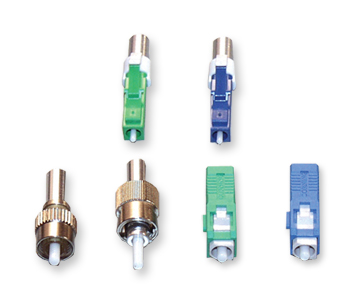Cisco is one of the worldwide major fiber optic network equipments provider, the networking engineers may time and again facing the problems of install fiber optic transceivers to other Cisco devices for optical signal transmission. This article provides the installation instructions for Cisco small-factor pluggable (SFP) and SFP+ transceiver modules. These modules are hot-swappable input/output (I/O) devices that plug into 100Base, 1000Base and 10Gbase ports, to connect the module ports with the fiber optic or copper network.
Cisco SFP+ transceiver modules installation is the combination of Cisco original SFP+ or compatible Cisco SFP+ transceiver modules with your Cisco devices. Each port must match the wavelength specifications on the other end of the cable and that the cable must not exceed the stipulated cable length for reliable communications. Using only Cisco or compatible Cisco SFP+ transceiver modules on your own Cisco devices, as it allows a Cisco switch or router to identify and validate that the transceiver modules is certified and tested by Cisco.
Cisco SFP transceiver module product number and description at Compatible cisco SFP transceiver:
Cisco SFP+ transceiver module product number and description at Compatible cisco SFP+ transceiver
Cisco SFP+ transceiver module product number and description at Compatible cisco SFP+ transceiver
Take SFP module for example, let’s discuss the installation guid and note.
To begin the installation, tools you need is listed below:
Wrist strap or other personal grounding device to prevent ESO occurrences
Antistatic mat or antistatic foam to set the transceiver on
Fiber optic end-face cleaning tools and inspection equipment.
To begin the installation, tools you need is listed below:
Wrist strap or other personal grounding device to prevent ESO occurrences
Antistatic mat or antistatic foam to set the transceiver on
Fiber optic end-face cleaning tools and inspection equipment.
SFP transceiver module have three types of latching devices to secure an SFP transceiver module in a port socket: mylar tab latch, actuator button latch, bail clasp latch. Knowing which type of latch your SFP transceiver module uses is crucial before the installation.
Disconnect all fiber optic cables before the installation
Attache an ESD-preventive wrist strap to your wrist and to the ESD ground connector or a bare metal surface on your chassis.
Removing the SFP transceiver module from its protective packaging.
Check the label on the SFP transceiver module body to verify that you have the correct model for your network.
Find the send (TX) and receive (RX) markings that identify the top side of the SFP transceiver module.
Position the SFP transceiver module in front of the socket opening. Different Cisco devices have different SFP module socket configurations. Your Cisco device could have either a latch-up or a latch-down orientation. Ensure that you are installing the SFP transceiver module in the correct orientation for your Cisco device.
Insert the SFP module into the socket until you feel the connector latch into place.
Press the SFP into the slot firmly with your thumb to ensure that the transceiver is properly latched in the socket.
Attache an ESD-preventive wrist strap to your wrist and to the ESD ground connector or a bare metal surface on your chassis.
Removing the SFP transceiver module from its protective packaging.
Check the label on the SFP transceiver module body to verify that you have the correct model for your network.
Find the send (TX) and receive (RX) markings that identify the top side of the SFP transceiver module.
Position the SFP transceiver module in front of the socket opening. Different Cisco devices have different SFP module socket configurations. Your Cisco device could have either a latch-up or a latch-down orientation. Ensure that you are installing the SFP transceiver module in the correct orientation for your Cisco device.
Insert the SFP module into the socket until you feel the connector latch into place.
Press the SFP into the slot firmly with your thumb to ensure that the transceiver is properly latched in the socket.
After the installation steps above, the verification is needed. Grasp the SFP and try to remove it without releasing the latch. If the SFP can not be removed, it is installed and seated properly. If the SFP can be removed, you need to re-insert it and press harder with our thumb, repeat it until it is latched securely into the socket.
